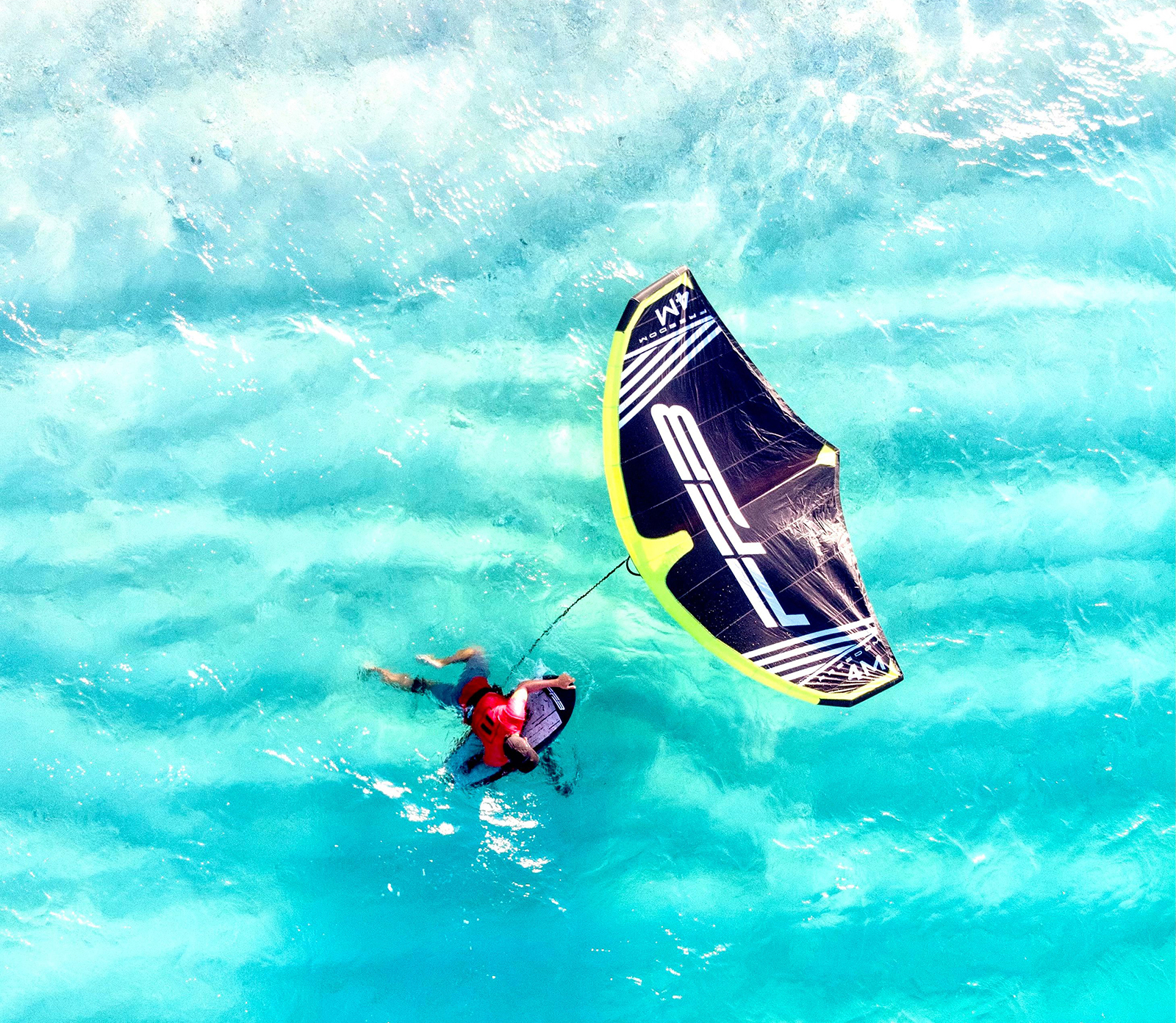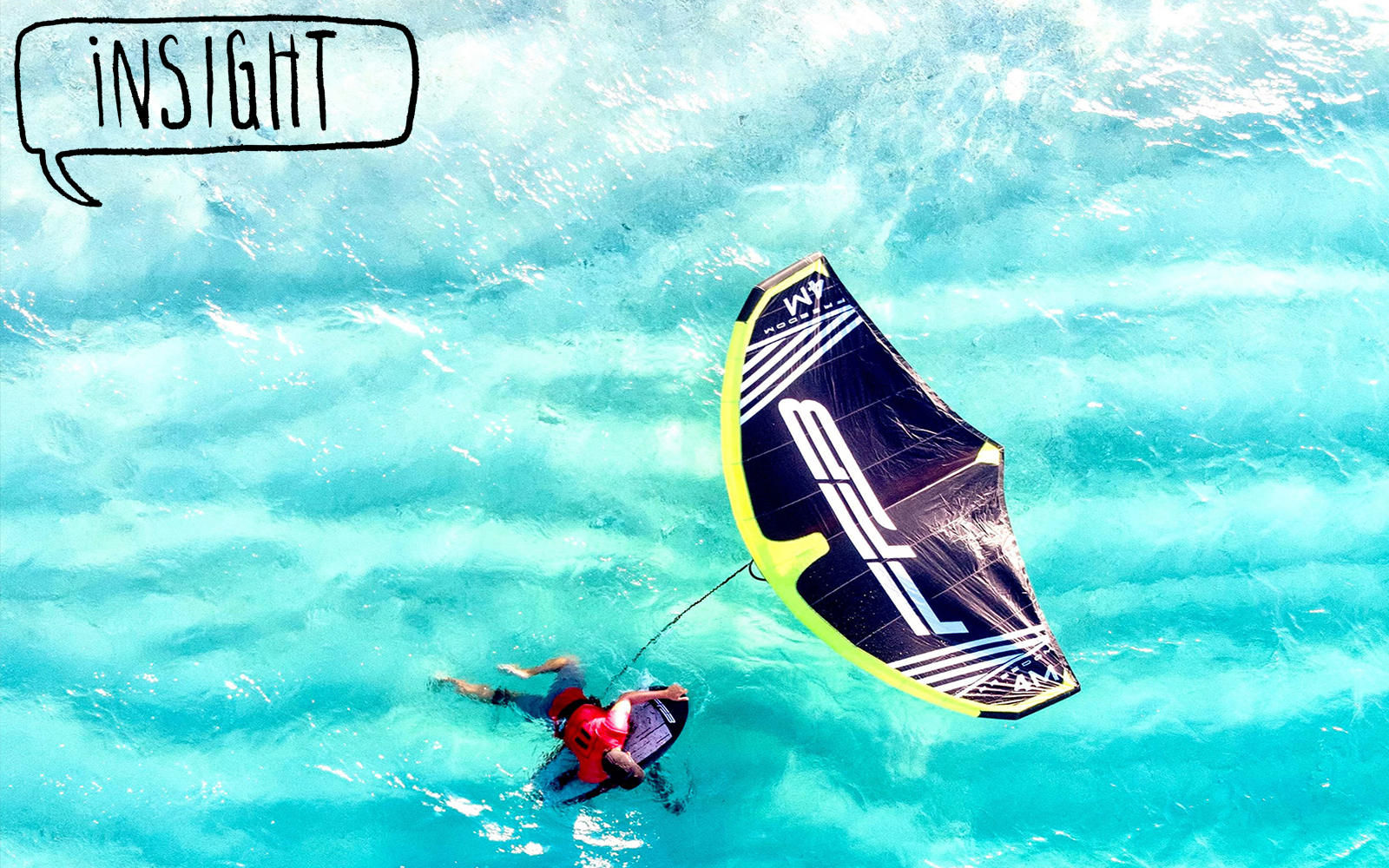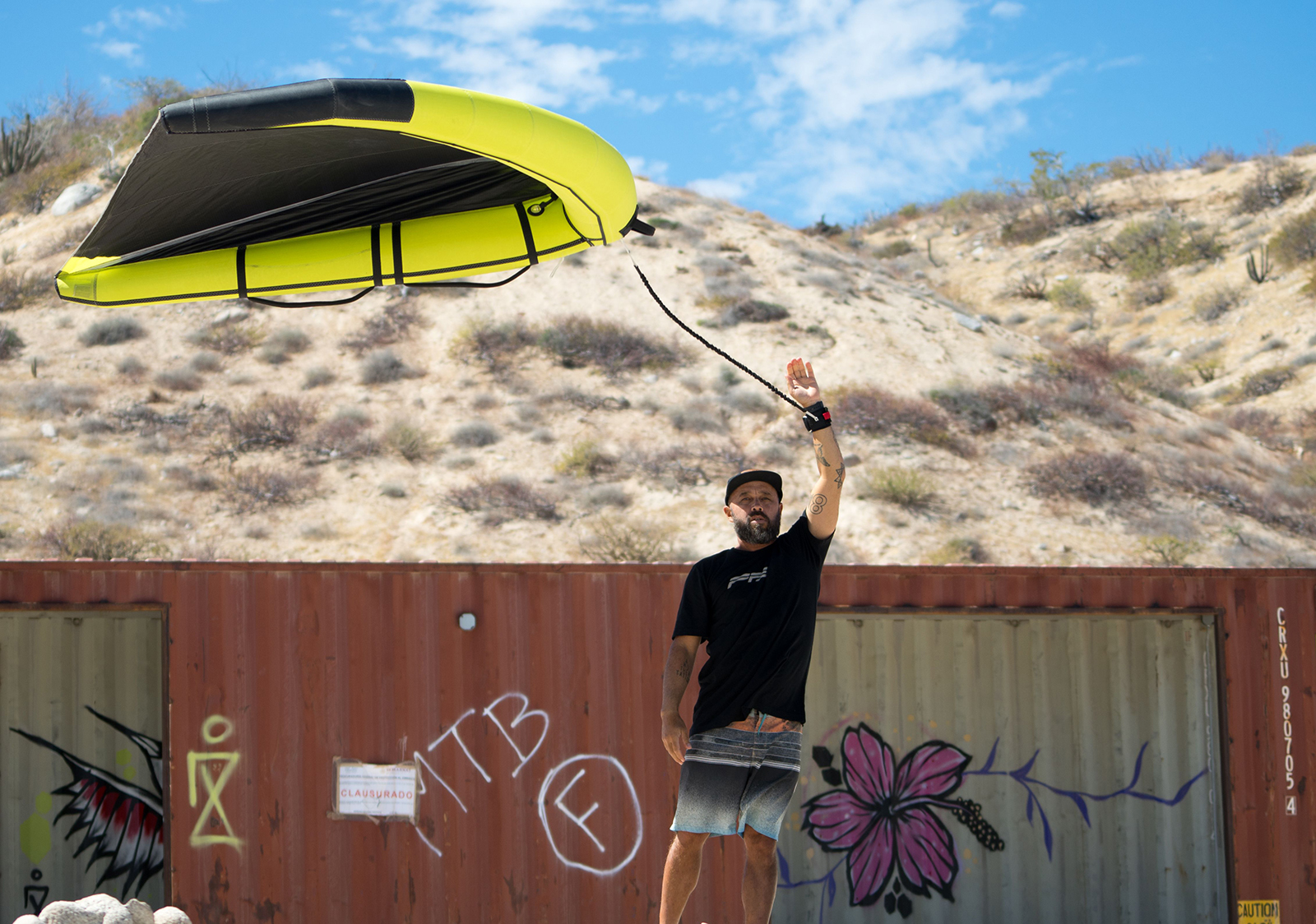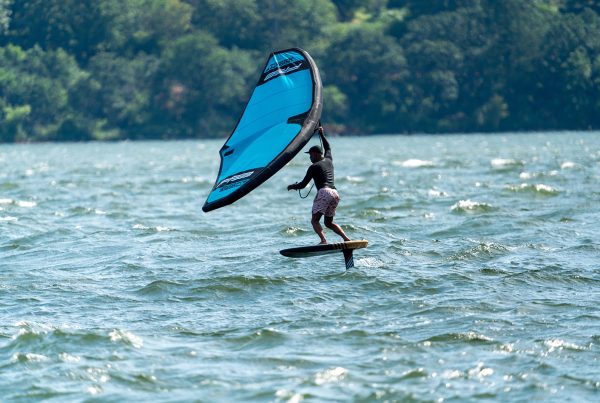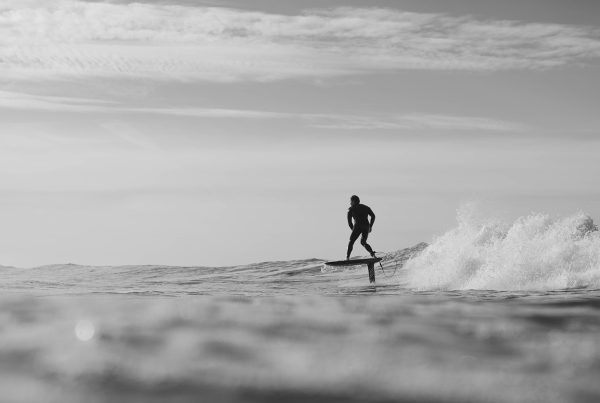YOUR FIRST WING SESSION:
GETTING STARTED, LOCATION, AND SAFETY TIPS
If you’re asking yourself if you should give wing foiling a try, do it! You won’t regret it. No longer will you be cursing the wind; you will finally be excited for a windy day. To get started you need the right equipment. If you haven’t already read our blog post on how to pick the right equipment check it out below.
Once you have the essentials, it’s time for your first winging session. Within this article we will cover the basics to make sure you have the best possible experience.
LOCATION
When you first start to Wing, selecting the right location on the right day can make the difference between a successful session and a session full of cursing and swimming.
Wind – Cross/Slight On Shore and at least 15mph.
When checking the forecast of your local spot you should be looking for winds at least 15mph that is blowing across the shore or slightly on shore. Stay away from offshore winds for a while. Cross shore or slightly on shore offer the safest learning conditions as they will keep you closer to the shore and you should have no problem getting back to dry land. We suggest at least 15mph as this is enough wind to get you up and going on a 5-6M Wing, but you aren’t going to have your arms pulled off.
Tide – Note your local conditions. Wind over tide is the most favorable.
The tide can be very powerful across the globe so knowing the direction and time of the tides can keep you safe and save you a long walk back to your car after a session. We always suggest you research your local tidal system by contacting your local surf shop or checking out some online reports. If your location allows it wind over tide (wind blowing in the opposite direction to the tide) is the best time to head out as this will keep you in more fixed position when learning and can also give you more power once up on foil.
Water State – Swell and Chop
If possible, you should try and learn in calm flat water with minimal water movement. You also want to make sure the water is deep enough so your foil won’t run aground. Lakes are an ideal setting to learn to Wing, but if you are coastal then pick a day or location with less swell or chop.
SAFETY
Don’t worry, we will get in the water soon, but before we do let’s check off a few key safety points! Wing foiling is safe, but like all water sports, the body of water needs to be treated with respect. Before entering the water check the following:
1. You are wearing a coast guard approved life jacket
2. You are wearing a helmet (we recommend when learning)
3. All your gear is assembled correctly
4. You have your wing and board leash attached
In our next installment of “Your First Wing Session” series, we explain step by step how to get up and moving, making your first turns, and taking flight.


